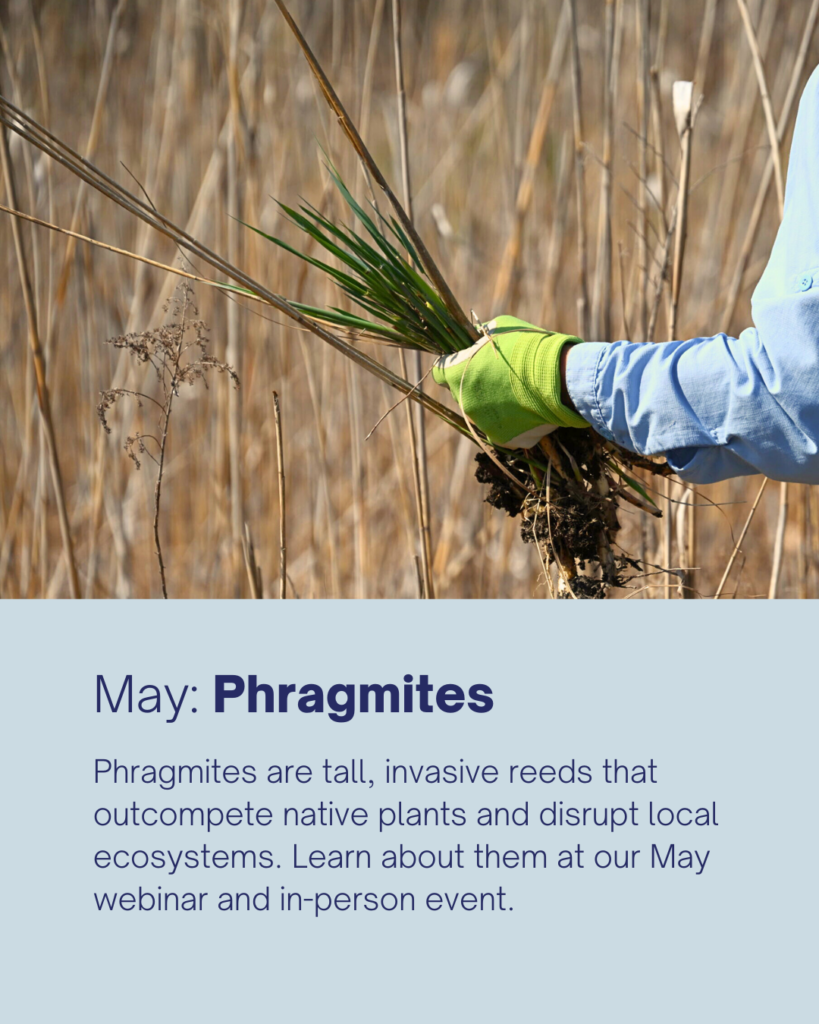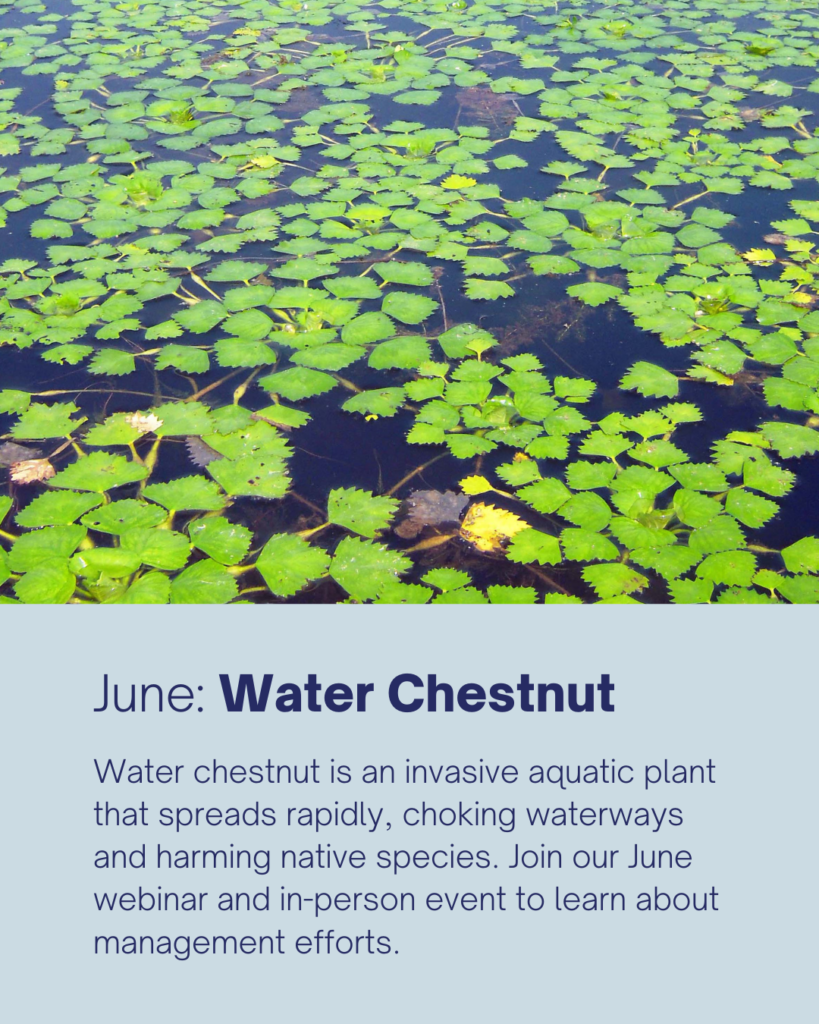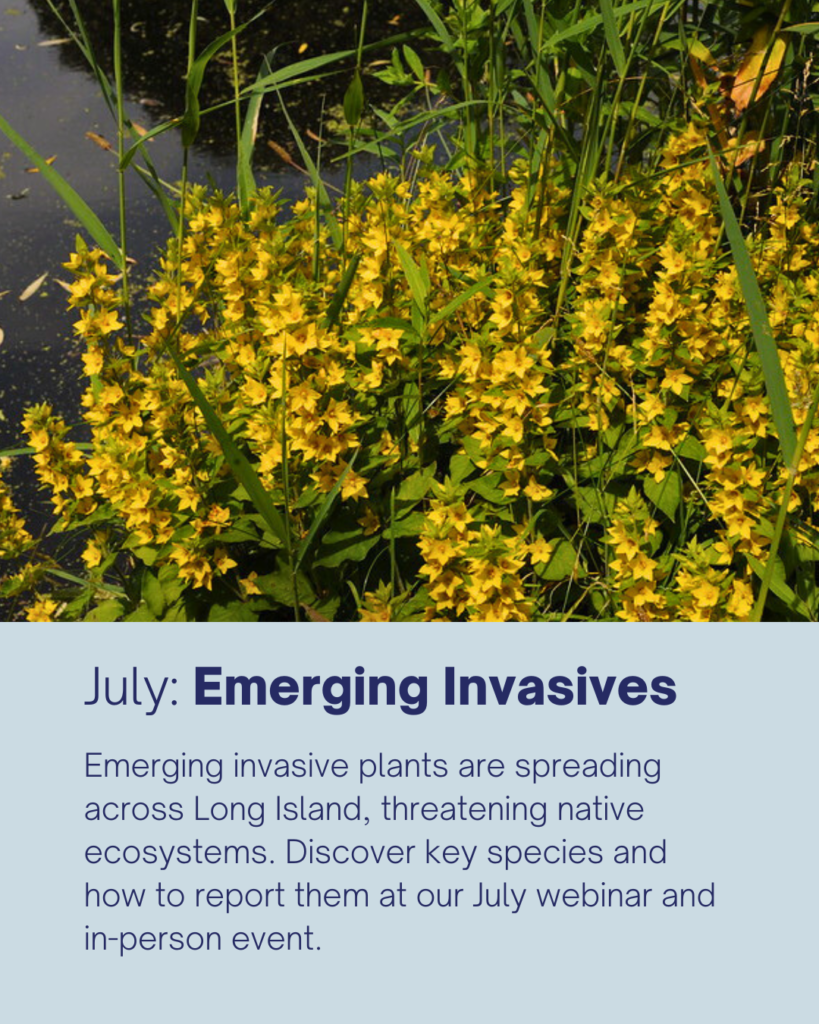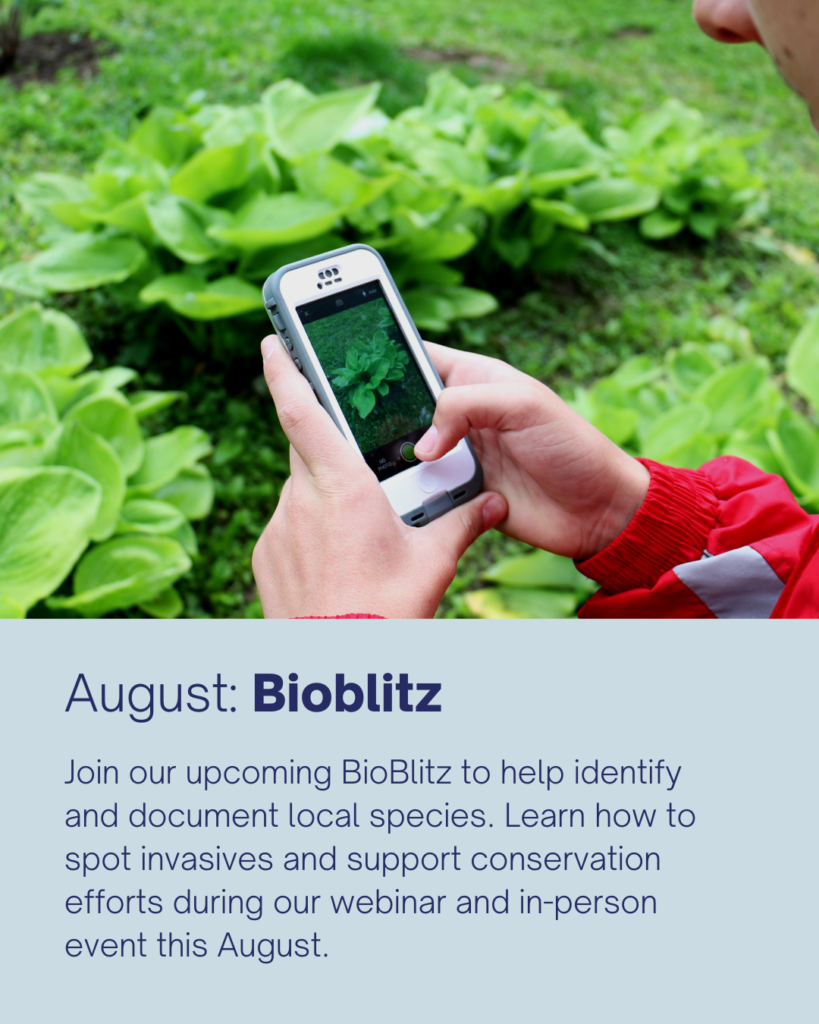About
Community Science LI (CSLI) is an annual educational webinar series that highlights various community science opportunities around Long Island, and the importance of those projects in supporting local wildlife conservation efforts. Webinars coincide with the survey season for each monitoring program.
The series will span from May 2025 to August 2025, covering topics on invasive species such as phragmites, water chestnut, emerging invasives and a bioblitz! In addition to these exciting webinars, CSLI will be hosting five in-person events related to each topic!
CSLI is hosted by Seatuck together with our partners in the Long Island Sound Study, NY Sea Grant, Peconic Estuary Partnership, South Shore Estuary Reserve, and the Long Island Invasive Species Management Area.
Webinar Schedule
Scroll to the bottom for information on the in-person events!
15
MAY

Resources
Phragmites!
Date and Time: May 15th, 2025 at 7:00PM
Speakers: Steve Young (Botanist Consultant), Kaitlin Mattei (Seatuck)
Facilitator/Host: Seatuck Environmental Association
12
JUN

Water Chestnut!
Date and Time: June 12th, 2025 at 6:00PM
Speakers: Abby Marino (Program Manager, Long Island Invasive Species Management Area (LIISMA)), Carlos Morantes Ariza (Aquatic Invasive Species Coordinator Region 1, NYS DEC)
Facilitator/Host: SSER
9
JUL

Emerging Invasives!
Date and Time: July 9th, 2025 at 6:00PM
Speaker: Kassidy Robinson (Education & Outreach Manager, Long Island Invasive Species Management Area)
Facilitator/Host: LISS
Resources
Coming Soon!
7
AUG

Long Island Coastal Bioblitz!
Date and Time: August 7th, 2025 at 6:00PM
Speakers: Dr. David Taylor (Associate Professor, Sustainability Studies Program, Interim Director of Sustainability Studies, Director, Environmental Humanities Track, Stony Brook University, School of Marine and Atmospheric Sciences)
Facilitator/Host: PEP/LIISMA
Resources
Coming Soon!
In-Person Event Schedule
17
MAY
Phrag Pull!
Date and Time: May 17th, 2025 at 9:00AM
Speakers/Partners: Kaitlin Mattei (Conservation Project Manager, Seatuck)
Join us for a volunteer phragmites pull at West Brook! The only dam on West Brook, a major tributary of the Connetquot River, failed in 2019 and allowed the artificial pond behind it to drain. For the first time in over 100 years, the brook could once again flow naturally from its headwaters in Bayard Cutting Arboretum State Park down to the tidal reaches of the Great South Bay. It is now one of only a few free-flowing streams on Long Island. It has great ecological potential as a place where migratory fish can return and other native riverine species can once again find a home. Join us on Saturday, May 17th, 2025, as we work to remove invasive species at West Brook and continue to improve stream habitat for diadromous fish. Please register to attend. You can also email [email protected] for more information.
27
JUN
Water Chestnut Pull!
Date and Time: June 27th, 2025 at 9:30AM
Speakers/Partners: Abby Marino (Program Manager, Long Island Invasive Species Management Area), Carlos Morantes Ariza (Aquatic Invasive Species Coordinator Region 1, NYS DEC)
Volunteer with us and remove invasive water chestnut to preserve Long Island’s Lakes! Invasive species like water chestnut can wreak havoc on the delicate balance of our lakes, crowding out native species and disrupting the ecosystem. Help protect the activities and traditions that make Long Island special, from leisurely angling to adventurous kayaking. Join and support our local ecosystem’s health and ensure enjoyment of our waterways for generations to come.
12
JUL
Nature Walk/Invasives Pull at Coindre Hall!
Date and Time: July 12th, 2025 at 10AM (Raindate: July 19th, 2025)
Speakers/Partners: NYSG, LIISMA, Coindre Hall Park Community
Join us for a nature walk at beautiful Coindre Hall Park and help us look out for invasive species! The event will kick off with a walk led by expert naturalists who will share information about the park, some of the invasive species found there, and how everyone can help manage invasives to protect these habitats just while going out for a stroll. During the walk, we’ll point out some species along the way, so we recommend having the apps iMap Invasives and Seek on your phone! After the walk, we will conduct an invasive species pull where attendees are invited to help us remove invasive plants from the park. Join us!
10
AUG
Bioblitz at Blydenburgh!
Date and Time: August 10th, 2025 at 10:00AM
Speakers/Partners: Seatuck
The Long Island Coastal Bioblitz will take place August 10-16, culminating with in-person events to attend on August 10th & 16th, to start/finish your week of logging plants and animals with experts and friends!
16
AUG
Bioblitz at Cranberry Bog!
Date and Time: August 16th, 2025 at 10:00AM
Speakers/Partners: PEP/LIISMA
The Long Island Coastal Bioblitz will take place August 10-16, culminating with in-person events to attend on August 10th & 16th, to start/finish your week of logging plants and animals with experts and friends!

